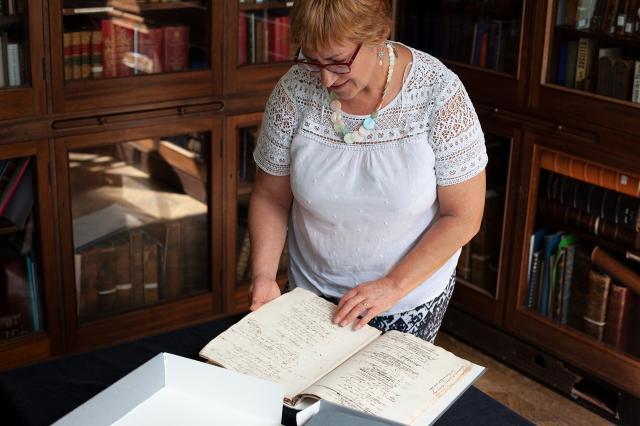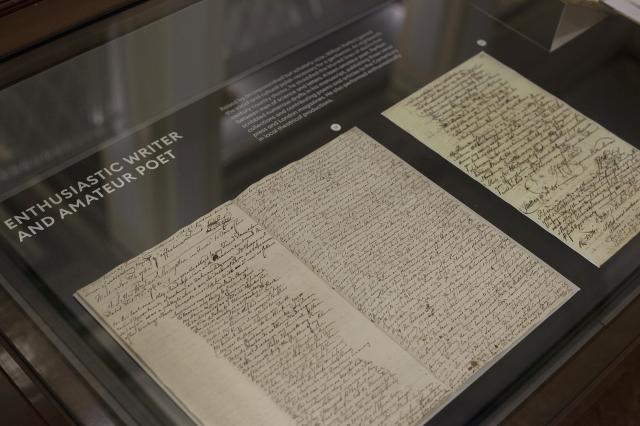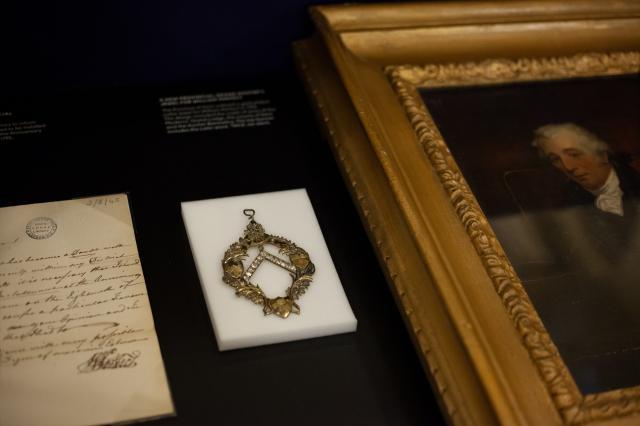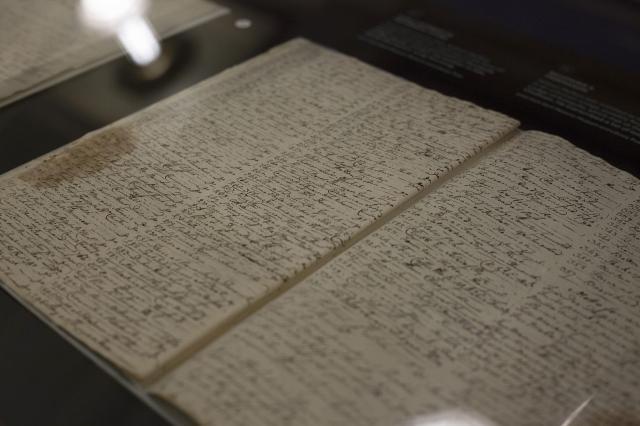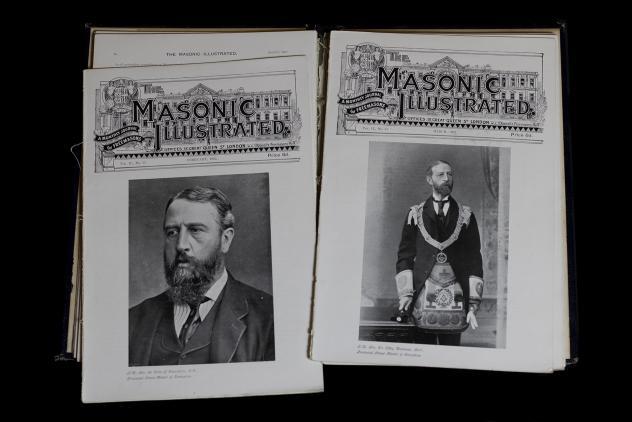The William Perfect Manuscript was recently conserved and digitised for public access in a project led by Museum of Freemasonry Archivist Susan. Very much a personal success, her work and the support of several organisations, has ensured that this unique and invaluable window into English Georgian life remains preserved for many decades to come. We chatted with Susan about the project, which has formed the basis of a new exhibition at the Museum of Freemasonry's Library.
Where did the William Perfect Manuscript come from and how did you first hear about it?
I discovered a biography of William Perfect by Shirley Burgoyne-Black while searching for a topic for my MA dissertation five years ago. Perfect was a Kent freemason, doctor and author who lived between 1734 and 1809. I then discovered that the manuscript was located among the collections of the Kent Museum of Freemasonry. I arranged to have the manuscript transferred on loan to the Museum of Freemasonry in London and the rest as they say is history.
What condition was the manuscript in when you first encountered it?
The manuscript, originally comprising eight separate volumes of different sized paper, was re-bound into a single volume by an unknown but keen Victorian. Over time, the tension caused by this binding damaged the edges of the original manuscript and some pages had been eaten by rodents at an unknown date. In many cases acidification, causing the paper to lose its stability and firmness, damaged the edges of pages causing them to crumble and disintegrate. It proved almost impossible to turn pages without causing additional damage to the manuscript and it was impossible to provide public access to this resource, given its fragile condition.
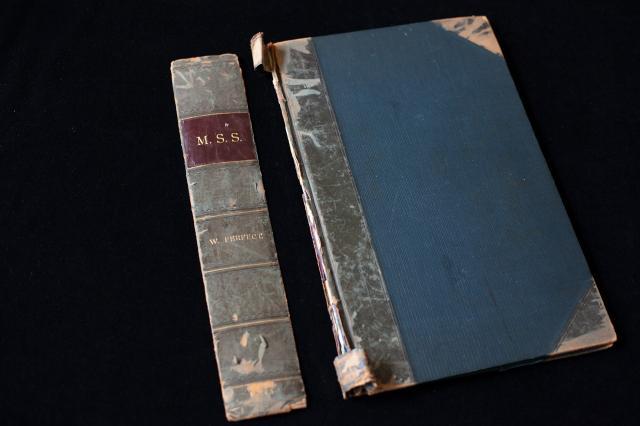
How did the conservation and digitisation project come about?
I remained in contact with the Kent Museum of Freemasonry and persuaded the Trustees [of the Museum of Freemasonry] to apply for a grant as part of a collaborative funding project to conserve and digitise the manuscript. This involved an application to the National Manuscripts Conservation Trust, which decided to provide some but not all of the funding due to pressure from numerous other applicants. They recommended applying to the Leche Trust, who gave additional funds. The remaining sums required to raise the £6,600 needed to complete the Project were granted by the Kent Museum of Freemasonry and the London Grand Rank Association Heritage and Educational Trust [the LGRA is a registered charity dedicated to ‘provide funds for the advancement of masonic education, knowledge and learning in all things masonic.’]
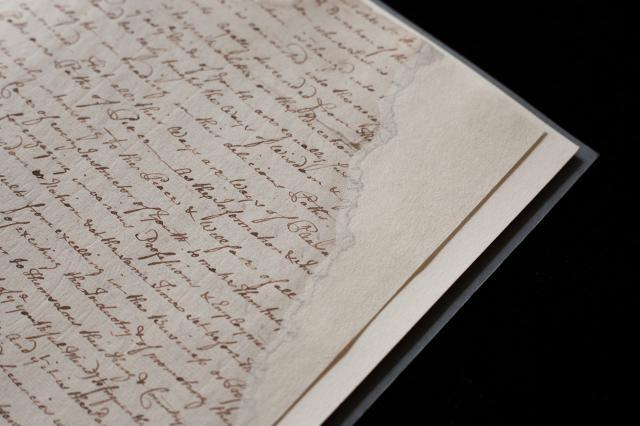
How do you find a specialist conservator to work on a manuscript like this and how long did their side of the project take?
The Museum of Freemasonry sought advice from Graeme Gardiner of Preservation Solutions Ltd. Graeme, an accredited paper conservator who has undertaken previous projects for the Museum, took three months to complete the conservation. This involved cleaning all the manuscript folios, repairing damaged and missing sections using Japanese papers, consolidating pages to reduce crumbling edges and replacing the individual volumes in acid-free fascicule folders. It is possible to find accredited paper conservators working all over the UK by searching on the ICON conservation register.
What about the digitisation? What was involved in digitising such a large volume of paperwork?
I compiled an index to all the draft poems, prose pieces and letters written in the eight volumes by William Perfect, providing additional information about individuals mentioned, local context and publication details for verses sent to magazines and included in poetry anthologies by this Kent-based doctor. I then discussed linking the index to the digitised pages of the Manuscript with the digitisation experts to enhance its accessibility by researchers worldwide. I agreed formats and standards with the digitisation company, Townsweb Archiving, and arranged for virtual access to the manuscript from the Museum of Freemasonry website. I am now investigating digital preservation for this unique resource, to ensure it remains accessible and readable in the future.
What happens now that it is all fresh and accessible?
Now the project is completed, a digital copy of the William Perfect Manuscript, including the comprehensive index, is accessible from the Museum of Freemasonry website, with a link from the Kent Museum of Freemasonry website. Now visitors and researchers worldwide can read and access the manuscript from the museum website.
Folios from the original manuscript are included in an exhibition about the life and times of William Perfect: Enlightenment Mason, Medic and Man of Letters in the Library of the Museum of Freemasonry until 11 January 2020. I will also be presenting two free curator’s tours of the exhibition on Saturday 7 September and Saturday 2 November 2019 so that is a great opportunity to find out more and ask any questions you may have.
